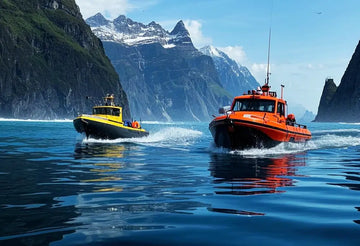🚨 Introduction
Water rescues are among the most challenging and dangerous emergency operations. Whether it’s battling rough ocean waves, swift river currents, or rapidly rising floodwaters, each water environment presents unique hazards that require specialized skills, equipment, and strategies. This blog explores effective rescue techniques for oceans, rivers, and floods, helping both professionals and enthusiasts understand the best practices for saving lives in these dynamic settings.
🌊 1. Ocean Rescue Techniques
Challenges:
Oceans pose unpredictable threats like strong tides, powerful waves, rip currents, and sudden weather changes.
Key Rescue Techniques:
- Rip Current Navigation: Instead of fighting the current, rescuers should swim parallel to the shore to escape its pull.
- Rescue Boards & Jet Skis: Rescue boards allow quick navigation through surf, while jet skis provide speed and stability in rough conditions.
- Tethered Rescue Lines: Essential for ensuring that rescuers aren’t swept away during high-surf operations.
- Use of Rescue Drones: Equipment like the JX-6A Water Rescue Drone can be deployed rapidly to deliver flotation devices to victims while keeping rescuers at a safe distance.
Pro Tip:
Always approach victims cautiously from behind to avoid sudden grabs that could endanger both the rescuer and the person in distress.
🌊 2. River Rescue Techniques
Challenges:
Rivers often have swift currents, hidden debris, and unpredictable drop-offs, making them highly dangerous for both victims and rescuers.
Key Rescue Techniques:
-
“Reach, Throw, Row, Go” Principle:
- Reach: Use poles or rescue hooks.
- Throw: Deploy throw bags with rescue ropes.
- Row: Use boats when necessary, ensuring they’re anchored upstream for stability.
- Go: Only as a last resort should rescuers enter the water, using proper PPE like dry suits and helmets.
- Defensive Swimming Techniques: Rescuers should float on their back with feet pointed downstream to avoid hitting obstacles.
- Tensioned Diagonal Lines: Setting up anchored lines across rivers can help stabilize rescuers crossing turbulent water.
Pro Tip:
Always assess river hydraulics. Features like “strainers” (debris that allows water to pass but traps objects) are deadly and should be avoided.
🌊 3. Flood Rescue Techniques
Challenges:
Floodwaters can rise rapidly, creating strong undercurrents, contaminated water, electrical hazards, and floating debris.
Key Rescue Techniques:
- Stay Out of the Water: Whenever possible, perform rescues from dry land or elevated areas. Never wade through fast-moving floodwaters.
- Use Inflatable Rescue Boats (IRBs): These are lightweight, stable, and ideal for navigating urban floods and tight spaces.
-
Deploy Aerial Rescue Tools:
The JX-6A Water Rescue Drone is particularly effective in floods. It can deliver flotation devices quickly to trapped individuals without risking rescuer lives. - Vehicle Submersion Rescues: Victims trapped in cars should be instructed to escape upstream of the vehicle to avoid being pinned against obstacles downstream.
Pro Tip:
Floodwaters may be electrically charged from downed power lines. Rescuers must be aware of hidden hazards beneath the surface.
🚀 Essential Water Rescue Equipment
No matter the environment, having the right gear can save lives:
- Personal Flotation Devices (PFDs): Always wear a life jacket designed for swiftwater or ocean rescue.
- Rescue Helmets: Protect against head injuries from debris.
- Throw Bags & Ropes: Vital for river rescues and flood situations.
- Rescue Drones (e.g., JX-6A): Provide rapid flotation support, especially in hard-to-reach or dangerous areas.
- Inflatable Rescue Boats: Essential for flood and ocean operations.
🌐 Conclusion
From the vast, unpredictable oceans to fast-moving rivers and life-threatening floods, every water rescue scenario demands unique strategies. The key to success is preparation, proper training, and the right equipment. Modern innovations like the JX-6A Water Rescue Drone are reshaping how first responders approach emergencies, offering faster, safer, and more effective rescue options.
Remember, in water rescue:
✅ Assess the environment.
✅ Use the right techniques.
✅ Trust the right equipment.
Stay safe, stay prepared, and save lives. 🌊🚨





